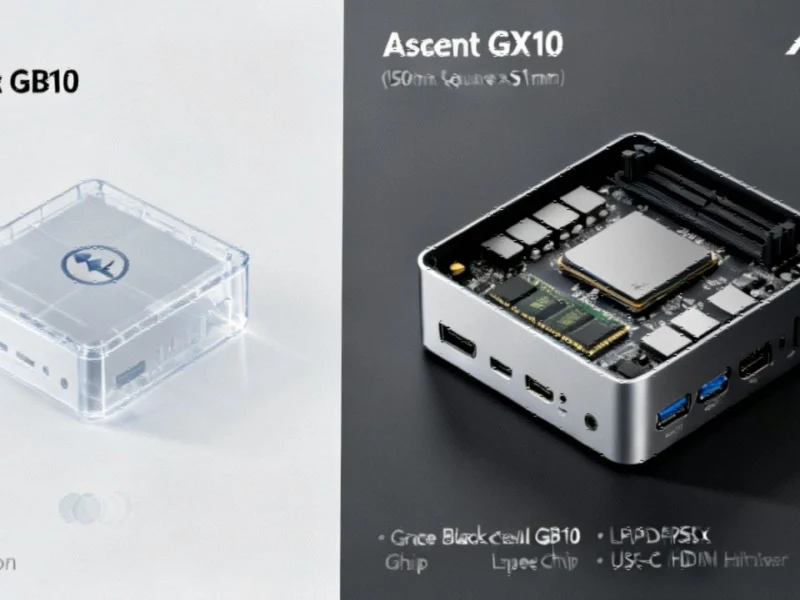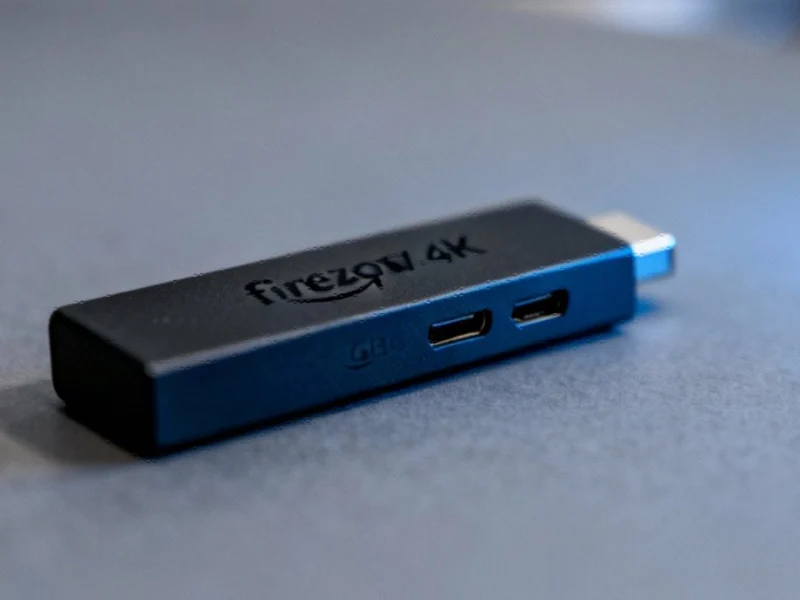Note: Featured image is for illustrative purposes only and does not represent any specific product, service, or entity mentioned in this article.
AI Workstation Availability Divide Emerges
The highly anticipated rollout of desktop workstations featuring Nvidia’s groundbreaking Grace Blackwell GB10 Superchip is creating a split in the market, with significant availability differences between major manufacturers. According to reports, Dell’s Pro Max GB10 system remains unavailable for purchase, listed with a “notify me when available” status on the company’s website with no indication of when that might change.
Meanwhile, sources indicate that Asus has beaten its competitor to market with the Ascent GX10, which uses the same GB10 hardware and is currently shipping through authorized retailers. The system is reportedly available for order at $4,100 from Viperatech, with the retailer committing to ship within ten days. This development represents one of the first commercially available systems based on Nvidia’s latest architecture for AI developers and researchers.
Technical Specifications and Performance
The GB10 Superchip at the heart of both systems represents a significant advancement in computing architecture, according to technical documentation. The chip merges CPU and GPU resources into a single unit and delivers up to one petaflop of FP4 computing performance, a level previously found only in data center installations.
Analysts suggest the integrated design featuring an ARM v9.2-A CPU paired with Nvidia’s integrated Blackwell GPU provides exceptional efficiency for AI workloads. The system comes with 128GB of LPDDR5x unified memory and supports models with up to 200 billion parameters, enabling researchers to work with larger AI models than previously possible in a workstation form factor.
Compact Design with Enterprise Features
Despite its substantial computing power, the Asus Ascent GX10 maintains a remarkably compact footprint. The report states that the system measures only 150mm square and 51mm tall, weighing just 1.48kg. This miniaturization is achieved while still incorporating advanced thermal management to maintain performance under heavy computational loads.
Storage options reportedly range from 1TB PCIe 4.0 NVMe SSDs up to 4TB PCIe 5.0 drives, providing ample space for the massive datasets required for AI training and development. Connectivity includes the latest Wi-Fi 7 standard, Bluetooth 5, and 10G Ethernet for high-speed data transfer.
Expansion and Professional Applications
For organizations requiring even more computational power, the system supports dual-system stacking through Nvidia’s ConnectX-7 networking and NVLink-C2C interface. This capability allows for local compute expansion without the need for additional infrastructure, according to technical specifications.
The emergence of these powerful AI development systems comes amid broader industry developments in artificial intelligence safety and capability. Meanwhile, related innovations in computing platforms continue to evolve across the technology sector.
Market Position and Competitive Landscape
The immediate availability of Asus’s system positions the company advantageously in the emerging market for compact AI workstations. While Dell and other manufacturers like Acer are developing similar systems, the shipping status of the Ascent GX10 gives Asus a potential head start in capturing early adopters.
According to the analysis, these systems are designed specifically for researchers and developers who require data center-level computational power in a workstation-sized package. The ability to order the Asus system immediately may prove significant for organizations working under tight development timelines.
The competitive dynamics in this segment reflect broader market trends where timing and availability can determine market share in emerging technology categories. As the AI hardware market continues to evolve, manufacturers are racing to deliver specialized systems that balance performance, form factor, and accessibility for development teams.
This article aggregates information from publicly available sources. All trademarks and copyrights belong to their respective owners.



